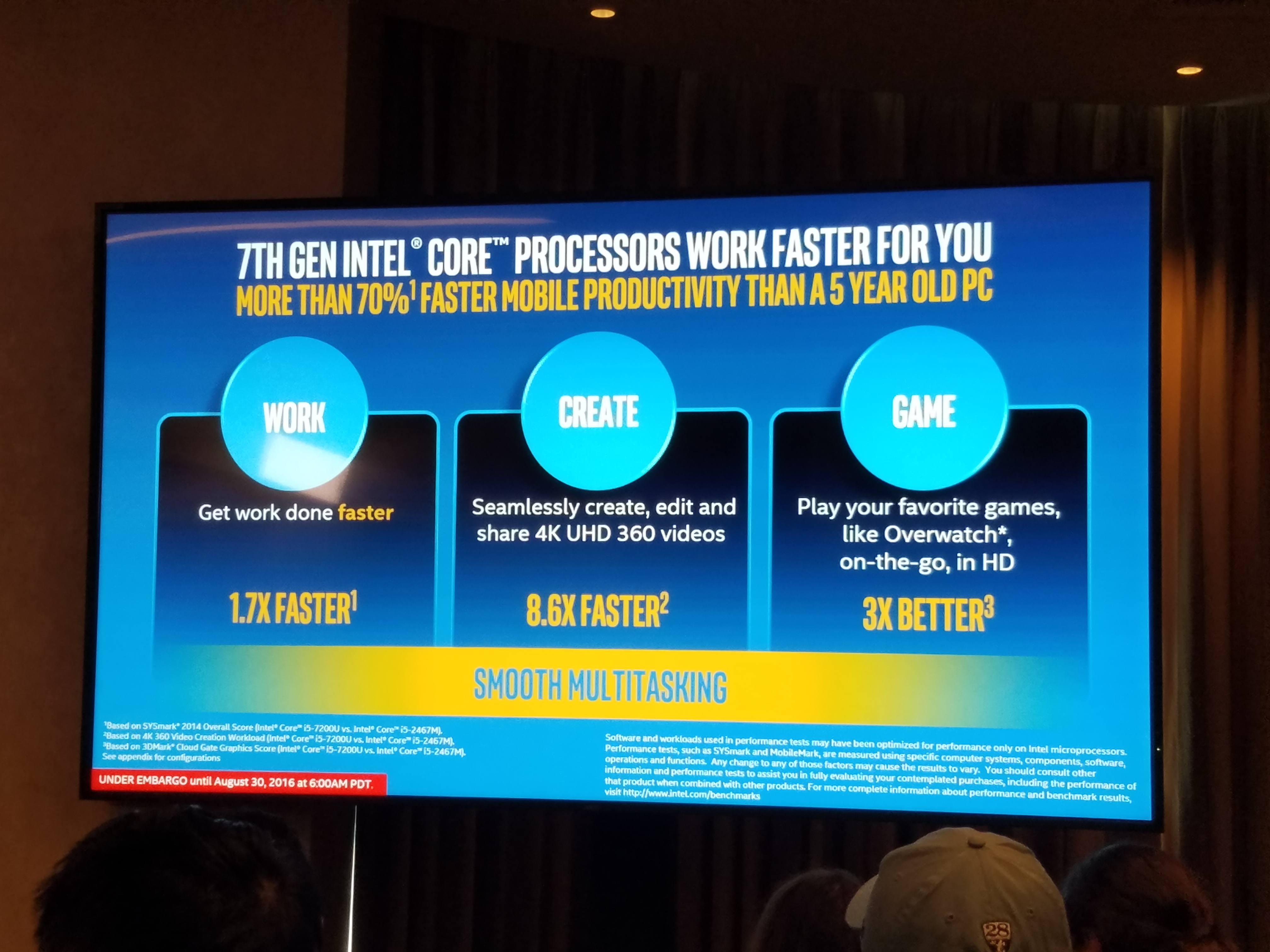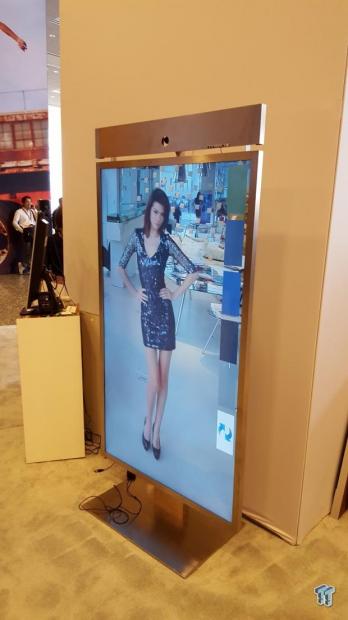
by Lidia Paulinska | Sep 9, 2016
IDF, September 2016 – At the Intel Developer Forum, while a lot of the discussion was on IoT and smart connections, Intel continued their technology advancement and development of multi-core processors for the consumer computer market. The company held a briefing to announce their 7th generation Core series microprocessor.
The new processors continued the take advantage of the new process technology. The processors use the Intel 14nm+ technology which is an updated and advanced version of the 14nm process released a short time back. This new process is about 12% faster than the standard 14nm process and allows for increased productivity in the design. The new process is not only faster but also lower power so the designs of the new PC’s using them can be thinner and lighter with longer battery life.
The higher density design on the 14nm+ process allowed for the addition of a new graphics engine to be built into the chip that will now support UHD 4K video without an additional external GPU card or chip. This will all the computers for be used for immersive applications such as VR, and high resolution movies.
This year, there are supposed to be over 100 designs from multiple manufacturers that will be released with the new core generation core processors. These designs now support new standard functions such as USB 3.1, Thunderbolt 3, Windows Hello, a pen/stylus, and 4K display panels. These will enhance both gaming/entertainment and standard office productivity. The computers with the new processors, and supporting the new DDR4 DRAM memory and Flash memory storage solutions, are many times faster and more productive than a computer from as little as 5 years ago.

by Lidia Paulinska | Aug 21, 2015
August 2015 – One of the major announcements at this year’s IDF was the availability and applications of the Realsense stereo 3D camera system in modules, tablets, and laptops. The technology was featured in a large section of the conference area and the display areas.
Targeting consumer applications, they were showing off the speed and accuracy of the technology with a couple of different exhibits. One was a 3D printing demonstration. It featured taking a 360 degree Stereo 3D photo of a person’s head, and then in real time transferring it to a 3D laser printer. The printer carved the image into a block of Lucite and producing an embedded 3D likeness of the person. The demonstration was so popular that they had to go to rotating time and call back system to get the images taken and printed. While the image capture is fast, under a couple of minutes, the laser printer averages about 20-25min per print which is what caused the queue for the demo.
One of the other heavily attended demo was a mirror with the integrated RealSense camera. The camera would take a 3D image of the person in front of the mirror. The mirror is actually a half mirrored display that can then superimpose jewelry on the person in the mirror. The system allows for the selection of earrings and necklaces on the people in the mirror. This system was very quick on setup – under 1 minute and very responsive to movement. The system is a prototype and had some challenges if there was more than 1 person in the view of the camera, but on the whole it worked well.
There were a number of other RealSense applications targeted at consumers being shown highlighting the measurement capabilities, depth & relative location capabilities, and virtual showroom/furniture capabilities. These have been shown in prior shows, and second generation software was the main display for these technology applications.

